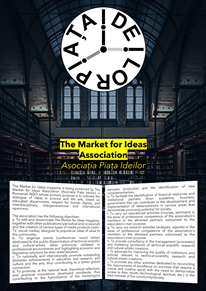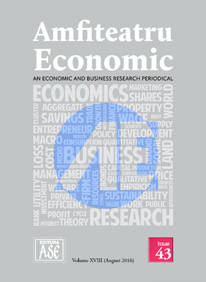
The Woodstock Days of Peace and Music The Arts of Diplomacy [V]
The 60s and 70s in the United States of America were eras whose counter-cultures were defined by war, racial tensions, and a population of youth defying their government. Held in Bethel, New York, from August 15 to 18, 1969, The Woodstock Festival was a cultural playground of drugs and rock’n’roll that symbolized America’s political and social climate.
Like many prestigious music events, Woodstock is a one-off. Yet the impact of the 1969 festival has been felt for decades, changing the live music industry and inspiring millions of people, many of whom weren’t even born then. Woodstock was preceded by the 1967 Summer of Love, the Monterey International Pop Festival and the Atlantic City Pop Festival. But it would overshadow them all. Why? Woodstock was the culmination of a decade of turmoil, marking the awakening of American youth. The 1960s were marked by the Civil Rights Movement, the Vietnam War controversy, riots at the 1968 Chicago Democratic Convention and several high-profile assassination attempts. The second half of the decade in particular was marked by a value war and a surge of anti-establishment sentiment among the country’s young citizens. Woodstock showed that the counterculture was alive and thriving, and that its members were more conscious than ever.
Despite the contradictions that have been described, Woodstock was an unique political phenomenon. So many people, even some of those who attended the concert, were unaware that some of the music played during that memorable three days was actually politically charged. Artists of the 1960s tried to speak through their music, commenting on the social ills of the time. Woodstock showed politicians that the public overwhelmingly wanted an withdrawal from Vietnam. It showed record labels (biggest players by far in the music industry at the time) that people were interested in music with a message, and that it was not controversial to invest in those artists.
The (international) politics of that era
In the early 1960s, a young Democratic president, John F. Kennedy, ignited hopes in the United States for far-reaching political and social changes to lead the country into the modern state and prevent further involvement in Vietnam. But after his assassination on November 22, 1963, the nation was shocked. President Lyndon Johnson succeeded him at the White House. The Cold War between United States and USSR led to a constant fear of Communism in the US. So they ended up getting involved in the conflict between North and South Vietnam. But violent conflict cannot be resolved quickly or easily. It turned immediately into a war. In the government’s view, the priority was to protect democracy, but there was a growing realization that the war, which began violently in 1959, was unwinnable (and it won’t end till 1973).
But there was the anti-war movement. A large portion of Americans rose up against the Vietnam War and actively protested against the government and the military. Some of these were because of their general opposition to war, while others were libertarians who believed that the best way to stop the spread of communism was to promote democratic rather than authoritarian governments. However, thousands of young people had to serve in the military. Some of them were drafted into the military even after graduating high school and people began to question the voting age limit.
A music festival to cha(lle)nge politics
According to the documentary Woodstock: three days that defined a generation, Woodstock was founded by a small group of incredibly wealthy men and was initially carried out only for their financial gain. The project was funded by two of the men, and the event was organized by the others. One of the individuals, Michael Lang, had previously organized a Miami music festival that was a complete failure. The original goal of Woodstock was to experiment with a new musical genre. Since nothing as significant had been attempted previously without success, many artists were leery about the festival.
Initially, they found a field that, in their perception, was big enough for the huge event that was to come, but they didn’t expect to sold all the tickets so fast. According to that, the city’s residents decided they wanted the festival to take place elsewhere. The festival’s organizers tried different places, but every one of them was rejected by the townspeople. Finally, they met a farmer, Max Yasgur, who wanted to be the host and agreed for the festival to take place on his property. Because of the short amount of time they had to plan, the creators of Woodstock eventually went bankrupt. They lacked the time to completely construct the festival’s amenities, including restrooms, gates, and stages. They greatly underestimated the number of attendees at Woodstock. Nearly 500,000 people showed up when just about 150,000 were anticipated.
Despite the extensive list of mistakes, Woodstock is still regarded as iconic and unreachable. People had to walk miles to get to the farm’s entrance, thus all of the roads going there were crowded with empty vehicles. Because the fences weren’t constructed, there was no way to charge festival attendees; as a result, the entire event was free. The locals helicoptered in whatever supplies they could after they consumed all the food reserve and medical supplies. The only access to the stage was via helicopter, thus the performers were unable to arrive in time for their scheduled performances, so they decided to sing for as long as the audience requested. We can see the terrible conditions, extensive drug use, and frequent nudity in photos and movies from Woodstock. The documentary demonstrates the astronomical number of attendees and the circumstances they encountered. The lack of violence and the large number of guests who were genuinely courteous to one another are what the majority of people who visited Woodstock claim they can still clearly recall. In order to discover other hippies who shared their values at the time, which was challenging due to the taboo surrounding it, hundreds of thousands of people gathered.
Conclusion
Modern festivals aim to be like the original Woodstock and unite people in a similar way. According to Stephen Humphries, the celebration has assumed somewhat of a legendary character in the decades since. All contemporary music festivals succeed in making money, which was the original purpose of Woodstock, but are also facing a few mistakes and failures. A lot of comments about Woodstock referred to its grandeur, to the things it tried to highlight and to the fact that it appeared in a moment of uncertainty for the whole world, giving hope and representing a cultural symbol throughout the world. Everyone agrees that this was a unique festival, of an immense scale for its time, which succeeded in conveying to people the need for change.
At Woodstock, people gathered together to listen to music, dance, and enjoy themselves. The festival managed to create a category of culture which is still pertinent and venerated nowadays and was also a result of the tumultuous political climate of the time, and it tapped into the desire of young people to connect with others who shared their values. The drug culture of the 60s and 70s flourished at Woodstock, and modern music festivals have learned from the event’s influence in how they operate. Despite Woodstock’s short-lived financial success, it is remembered as an important cultural milestone.
References
Harrison, K. (2019). The Cultural Impact of Woodstock 69’. Medium. https://medium.com/@kathrynharrison03/the-cultural-impact-of-woodstock-69-50bb90d5b0b9
Hodgdon, T. Counterculture Movement, 1960s-1970s. Encyclopedia of American Social Movements. http://www.sharpe-online.com/SOLR/a/show-content/fullarticle/2/book002-PART13-article15
Klug, M. (2009). Woodstock – A Defining Moment of a Generation. Munich: GRIN Verlag.
Kropf, P. (2020). More Than “Sex, Drugs, and Rock’n’Roll?”: Woodstock’s Political and Cultural Elements. Forbes and Fifth. https://www.forbes5.pitt.edu/article/more-sex-drugs-and-rock-n-roll-woodstock-s-political-and-cultural-elements.
Ramos, V. (2018). How Woodstock Became a Symbol of U.S. Counterculture. Madame Blue. themadameblue.com.
Rindskopf, J. (2019). 18 Ways Woodstock Changed the World. New York. Cheapism. cheapism.com
Tyrrell, E. (2019). How Did the Woodstock Music Festival of 1969 Reflect and Impact America in the 60s and the 70s? Studylib. studylib.net.
Photo source: Wikimedia Commons.








